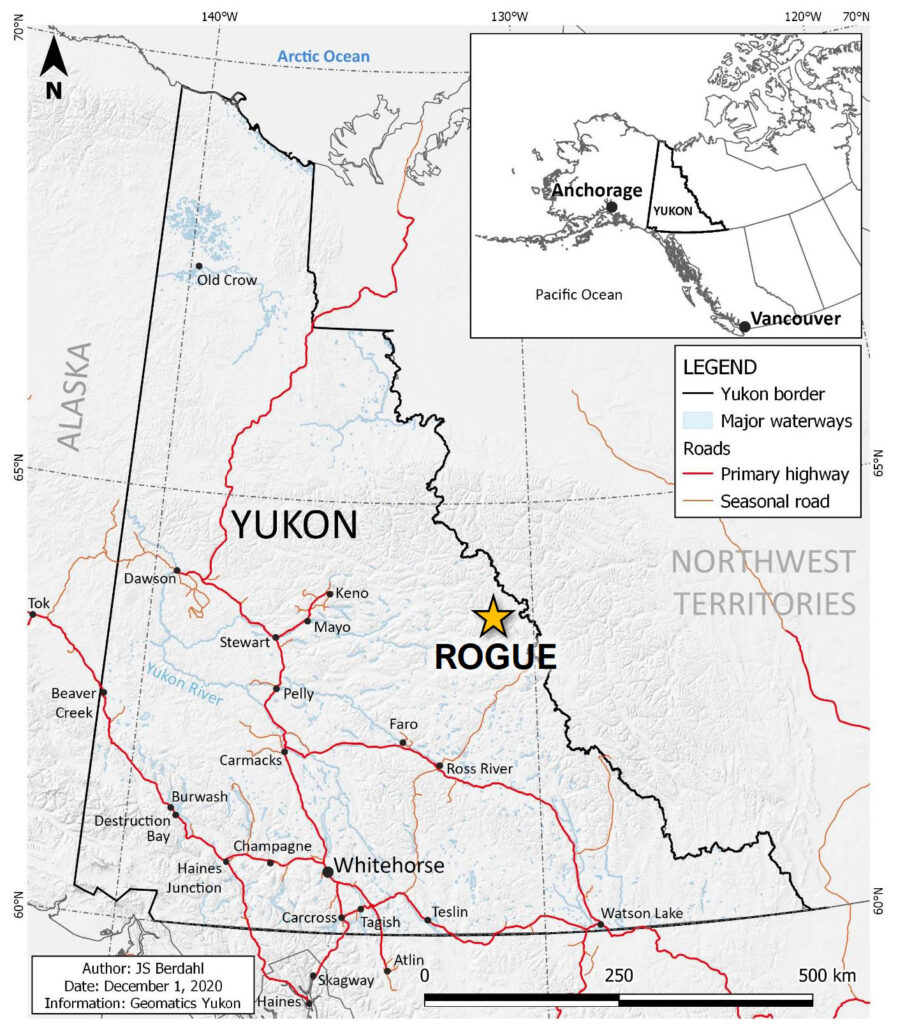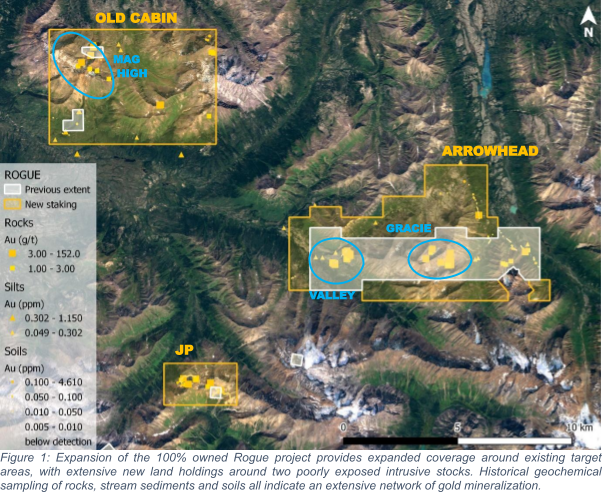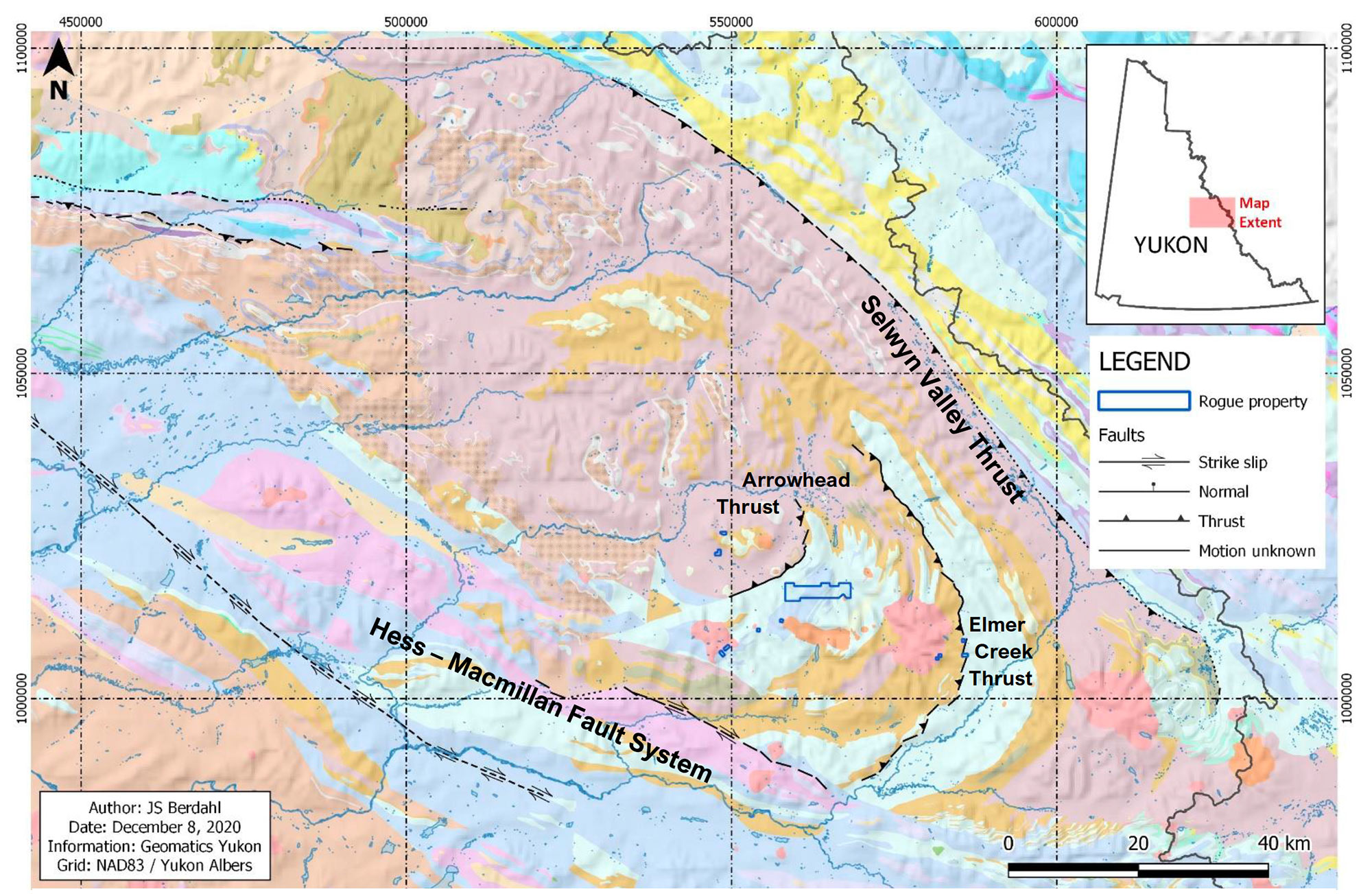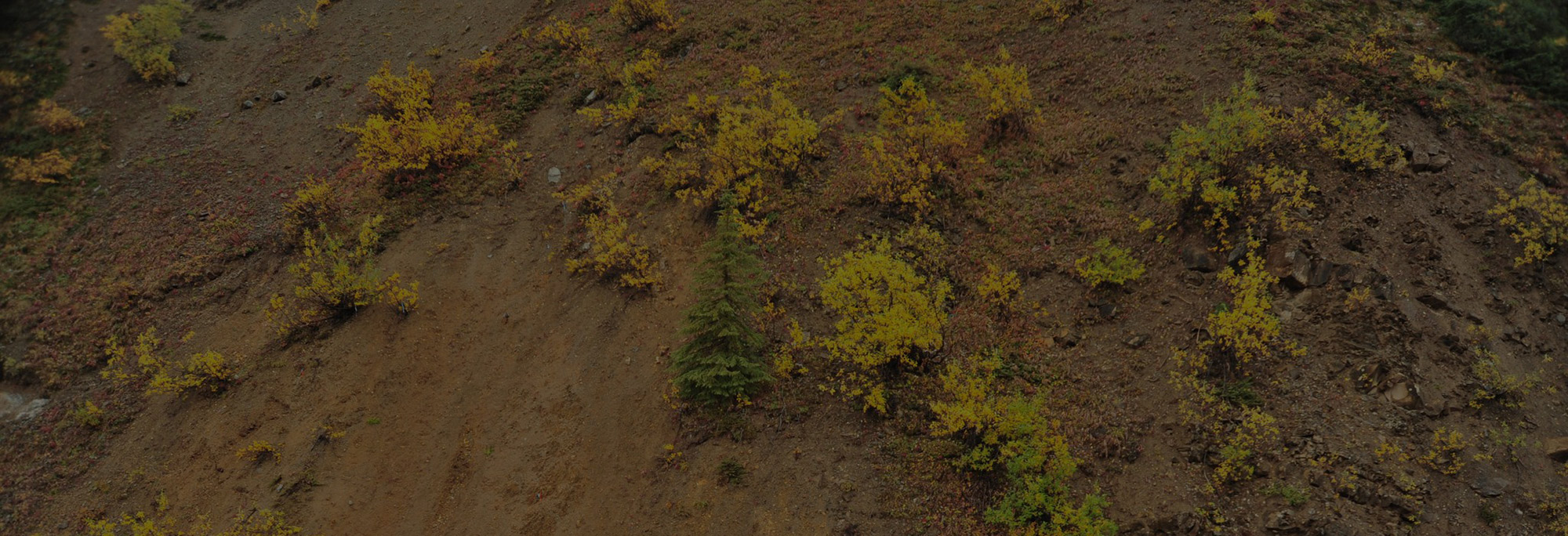
The 11,227-hectare Rogue Property comprises 442 mineral claims all 100% owned by Snowline Gold Corp. The main block covers a 9-kilometre trend of hornfelsing complemented by anomalous gold in rocks, soils and stream sediment samples. Along this trend are two suspected members of the Tombstone plutonic suite, the set of Cretaceous intrusions responsible for multi-million ounce reduced intrusion related gold systems (RIRGS) such as those at Ft. Knox, Alaska and Eagle, Yukon.
The first target, “Valley,” is a newly discovered intrusive stock with sheeted gold-bearing quartz veins within the intrusion and visible gold found in sulphide veins in the surrounding hornfels. The second, “Gracie,” is an inferred blind intrusion some 4.5 kilometres east of Valley, thought to be present based on alteration of rocks at surface and geophysical response. Because RIRGS mineralization is often most intense in the top of an intrusion, the potentially intact carapace at Gracie represents an attractive exploration target.
An additional large block, Old Cabin, covers a suspected buried intrusive stock inferred from a small (roughly 200 m) granodiorite plug within a 2 x 4 km magnetic anomaly. Historical grab samples within this zone include quartz vein material assaying 8.7 g/t Au, and sulphide-rich skarn assaying 5.3 g/t Au. Elsewhere on the block, historical grab samples of quartz vein material have assayed up to 10.0 g/t Au. Streams draining the claim block consistently returned values in the hundreds of parts per billion gold., One particular stream draining from the magnetic anomaly returned gold-in-sediment values ranging from 233 to 1150 ppb Au. It is thought that a buried intrusion at Old Cabin could have an intact carapace at its top, with increased potential to host a significant reduced-intrusion-related gold deposit.
The third block, JP, covers a 900 by 600 m exposure of an intrusive stock 7 km southwest of the Valley target. Historical sampling found subparallel gold-bearing quartz veins averaging 2 cm in width within and adjacent to the intrusion, commonly assaying between 1 and 4 g/t Au with samples up to 36.0 g/t Au.
Although RIRGS deposits typically represent large, bulk-tonnage systems, there is early evidence for high-grade zones within both target areas. Initial surface rock grab samples collected by previous operators and by an independent qualified person contracted by Snowline/Skyledger for the Rogue technical report include:
- 52.0 g/t Au; 95.3 g/t Au; 58.4 g/t Au; 44.8 g/t Au & 38.1 g/t Au at Valley.
- 57.0 g/t Au; 20.1 g/t Au & 15.1 g/t Au at Gracie.Aggressive follow-up exploration is planned for both targets in 2021, including geological mapping, additional soil sampling, geophysical surveying and drilling.


Not all previous work at Rogue and Einarson nor samples from either property have been verified by the Company, and readers are cautioned not to place undue weight on such results. Highlighted samples are selected from a larger population of samples and are not indicative of the average grade of mineralization hosted on either property. Both properties are early-stage exploration properties without established mineral resources, and no guarantee can be made at this time that economically viable mineral resources are present. As such, the projects represent a high degree of risk.

